The one change I made that significantly improved my patient’s outcomes
As a physical therapist, athletic trainer or any other rehabilitation specialist, we are always looking to improve our client’s outcomes. Without question, that is the single most important thing we can do to help others.
How do we do improve outcomes?
I can honestly say that you don’t always need to take every continuing education course under the sun and build all of your manual therapy skills in order to achieve better outcomes.
That’s not to say that it can’t help…but I’d say the one thing that helped improve my outcomes with my clients was a philosophical change I made with them and myself.
Too much of a softy
You see, I was too easy on them. I spent hours upon hours working with them in the clinic. I used all of my knowledge acquired from going to CEU courses, teaching me how to improve my manual therapy skills or how to assess their movement even better than I thought I was already doing.
All of this is great, I suppose, but only a very small fraction of what is truly needed to succeed as a PT (or any other clinician).
Empower the Client
To me, the greatest change that I made was to empower my clients (translation: hold them accountable!)
When I first started practicing PT in 2003, I would assign homework, so to speak, in the form of a home exercise program, like most of us do. The problem was, I didn’t always follow through in making sure the client was accountable.

I remember people telling me that they just didn’t have the time to do the work or forgot to do it. I tried to blame them and wasn’t pro-active enough. In retrospect, I was always reacting to each situation instead of setting the tone for the treatment plan.
Philosophical Change
I had to change my philosophy, my delivery, my rapport and my interactions. It was me, not them. It’s this mindset that many need to utilize when they’re dealing with others, in general. If something doesn’t go as expected, one needs to look at their own actions and emotions and figure out how to make the situation better in the future.
It’s easy to blame others when things don’t go right.
In the PT-client relationship, you are dictating the situation therefore the outcomes will rely on your ability to take the lead. The client has no idea what to expect or what to do. Often times, they’ve never been to PT before or have never had to deal with an injury or surgery.
Understand the WHY
The PT needs to step up and ensure that the client fully understands the home program and WHY the program will help them in their recovery. It’s easy to slip a pre-made sheet of exercises at someone and tell them to do it daily (which I very rarely tell people to do anyway) or to do them every other day (yeah, that’s more my style!)
The key is for the client to feel excited by their new home program because it will be the key to their success, the key to their recovery and the key to returning to whatever they’re looking to do. I somehow missed that point when I was first practicing as a PT.
My key, now, is to connect with the client as quickly as possible so they have the utmost trust in all I say and do. They trust that I’m not going to waste their time and efforts. They fully understand the exercise, why it will help them and a potential mechanism of why it is the best for them right now.
I’m not afraid to tell them “I don’t know” but I will tell them that a particular movement or exercise has helped others in the past and believe the same is true for them too. Take each experience and interaction and file it away…you’ll need it for the future.
Take it to the house
So, if you’re looking to improve your outcomes, make sure the client is held accountable and they fully buy in to your plan. That edge will be the game changer in your practice, trust me!

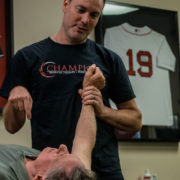

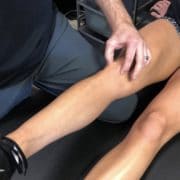
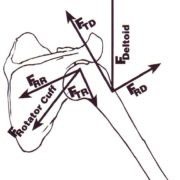
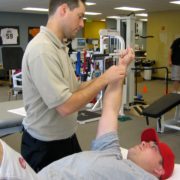

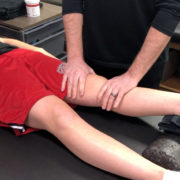
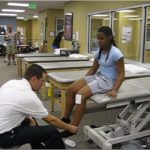

Perfect man.thanks
How long does a session of your pt take?
Do you use electrical stimulations and ultrasound and etc?…
And which courses do you suggest?
thanks! For questions about PT, please reach out by using this link. Thanks again! https://championptandperformance.com/contact-us/
Great stuff Lenny. Good reminder to keep our patients/clients accountable! Love your work. Keep it coming!
Thanks Chase. Much appreciated!
Your advice is so simple and logic and so necessary as our profession advances. Some days it doesn’t matter what manual technique I do if a patient is dealing with life stressors, maybe they just need five minutes to breath in a dark room but no one is telling them it’s OK to do that, and that they should do that. I’ll definitely bill that though…. 🙂
thanks Mallory…yeah, we try to complicate things a bit much when the obvious simple stuff may be just as effective. Thanks for reading!